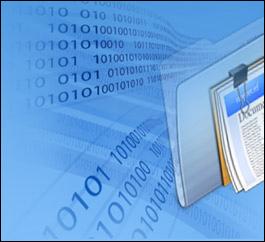NPDES eReporting


EPA has published the National Pollutant Discharge Elimination System (NPDES) Electronic Reporting Rule, which will modernize Clean Water Act (CWA) reporting for municipalities, industries and other facilities. Administrator Gina McCarthy signed the rule on September 24, 2015 and it was published in the Federal Register on October 22, 2015. The rule replaces most paper-based NPDES reporting requirements with electronic reporting.
Specifically, the rule requires regulated entities to report information electronically, instead of filing written paper reports. These reports include:
- Discharge Monitoring Reports (DMRs)
- Notices of Intent to discharge in compliance with a general permit
- Other specified program reports.
The rule also requires states and other regulatory authorities to share data electronically with EPA. The data that these regulatory authorities will share with EPA includes permit, compliance monitoring (e.g., inspection), violation determination, and enforcement action data.
- Benefits of Electronic Reporting
The NPDES Electronic Reporting Rule moves EPA and states into the 21st Century by:
- providing EPA and states the ability to strategically address the most serious water pollution problems while using limited resources efficiently
- supporting the goal of providing better protection of the nation’s waters
- enhancing transparency by providing a timelier, complete, more accurate, and nationally-consistent set of data about the NPDES program
- saving time and resources for permittees, states, tribes, territories, and the U.S. Government
- expanding EPA's efforts to provide more data to the public
- taking advantage of advances in information technology
- supporting the EPA-wide effort to move from paper to electronic reporting
- increasing data accuracy
- improving compliance
Data reported electronically will be made available to the public via the Enforcement and Compliance History Online (ECHO) system. ECHO enables public searches for facilities in local communities to assess their compliance with environmental regulations. It can also help investigate pollution sources, examine and create enforcement-related maps, or explore states' performance.
- Electronic Reporting Tools
Regulated entities and state and federal regulators will use existing, available information technology to submit, share, and manage the required data. EPA is working with states, tribes, territories, and software vendors to develop and have in place all of the necessary electronic reporting tools. Recognizing that many states, tribes, and territories have their own electronic data systems and reporting tools for managing NPDES data, the electronic reporting rule provides flexibility on the specific data systems and reporting tools to be used.
EPA has developed electronic reporting tools for NPDES data and is making them available to states. EPA’s tools are web-based and require only a computer, an Internet browser (e.g., Microsoft Internet Explorer), and access to the Internet (i.e., DSL, fiber optic). These tools communicate securely, requiring passwords and known responses to security questions. They are designed to provide electronic submittals with the same level of legal dependability as paper submittals. States have the option of using EPA’s tools directly, installing and hosting their own version of EPA’s tools, or developing their own tools. Information on EPA’s electronic reporting tools is provided below:
- NetDMR: A nationally-available electronic reporting tool, initially designed by states and later adapted for national use by EPA in 2009, which can be used by NPDES-regulated facilities to submit DMRs electronically to EPA through a secure Internet application over the National Environmental Information Exchange Network.
- NPDES Electronic Reporting Tool (NeT): NeT is a tool developed by EPA in 2012 to facilitate electronic submittal of data by the regulated community directly to EPA and its partners. It uses commercial "off-the-shelf" software and can support diverse form and data submission formats.
- Electronic Reporting Schedule
EPA is phasing in the reporting requirements of the rule over a five year period. The two phases of the rule, and their key milestones, are:
- Phase 1 – Starting on December 21, 2016:
- regulated entities that currently submit DMRs must begin to submit these reports electronically, instead of on paper.
- regulated entities in the 42 states were EPA implements the Federal Biosolids Program must begin submitting these reports electronically
- states and other regulatory authorities will begin sharing their compliance monitoring (e.g., inspection), violation determination, and enforcement action data electronically
- regulatory authorities will submit an implementation plan for meeting the Phase 2 data requirements for EPA to review.
- Phase 2 – Starting on December 21, 2020, regulated entities that currently submit certain other NPDES reports will begin submitting these reports electronically, instead of on paper. Reports covered in the second phase include Notices of Intent to discharge in compliance with an NPDES general permit, Biosolids/Sewage Sludge Annual Program Reports submitted to state governments, and a number of other NPDES program reports.
- Phase 1 – Starting on December 21, 2016:
- Final Rule Documents
- eRule National Webinar
The following links exit the site Exit
- November 2, 2016:
- November 9, 2016:
